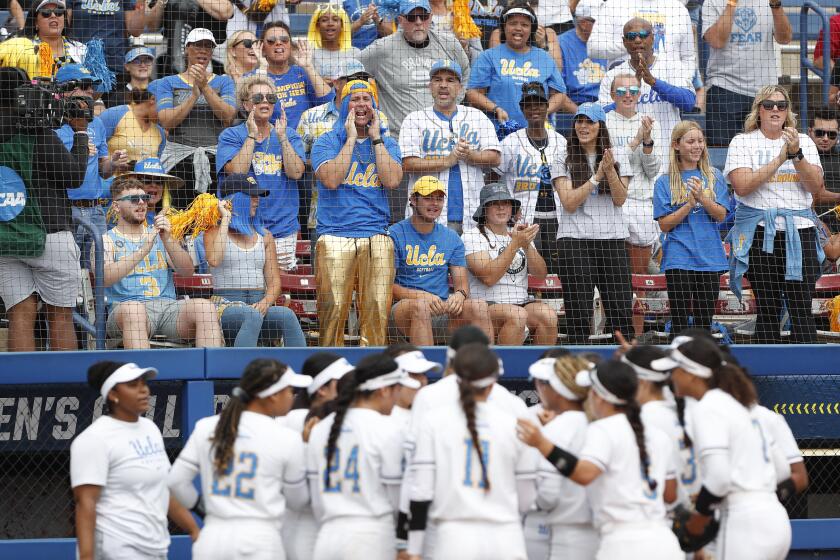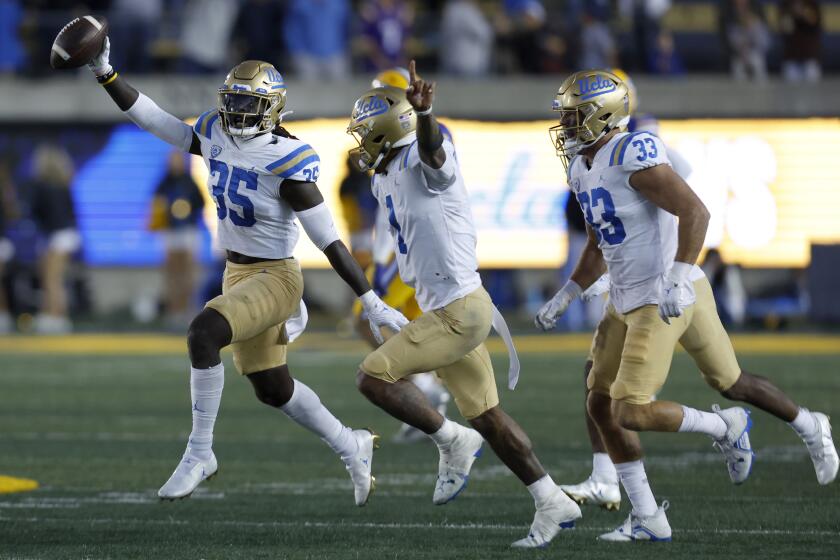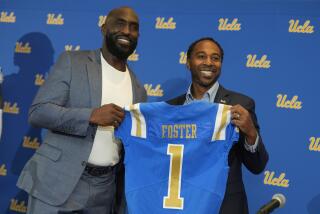‘A makeup call.’ UCLA athletic department financial challenges traced to legacy deals

- Share via
In his later years, John Wooden liked to muse about one oddity of his first 12 years as UCLA’s basketball coach.
His paychecks were always signed by the student body president.
One of those presidents, Rafer Johnson, also played for Wooden, meaning that Johnson in effect could have been considered his coach’s boss.
The arrangement stemmed from an ethos that gave UCLA students a large measure of control over their own campus from the 1920s through the late 1950s. The students ran the campus bookstore, the cafeteria and intercollegiate athletics, all of it managed by an organization called Associated Students UCLA that was overseen by a student-majority board of directors.
Bob Myers inquired about a deficit that has ballooned to $219.5 million, including a $51.8-million shortfall in the 2024 fiscal year.
Change came after a dispute about abandoning the Pacific Coast Conference as the result of a scandal involving payments to players. The University of California regents, irked by the lack of direct authority that the chancellors at UCLA and sister school UC Berkeley had over the intercollegiate athletic programs at each campus, decided that starting in the summer of 1960, the athletic departments at each campus would be university departments reporting directly to their respective chancellor. That move came with the mandate that each athletic program was considered an auxiliary enterprise similar to campus parking and housing, with the expectation that they would be similarly self-sustaining.
This decision came with significant financial fallout for ASUCLA. Previously, the profits from the school’s athletic teams subsidized the losses of the campus bookstore and the cafeteria. Where were the students going to get the money to keep those businesses afloat now?
John Sandbrook, who later became assistant chancellor under chancellor Charles Young, told The Times that the decision was made to give the bookstore — still run by ASUCLA — control over the logo rights for UCLA T-shirts, sweatshirts and other merchandise as part of an arrangement that still exists 65 years later.
“These legacy decisions got made for reasons that made sense at the time,” Sandbrook said, “but because of inertia never were modified.”
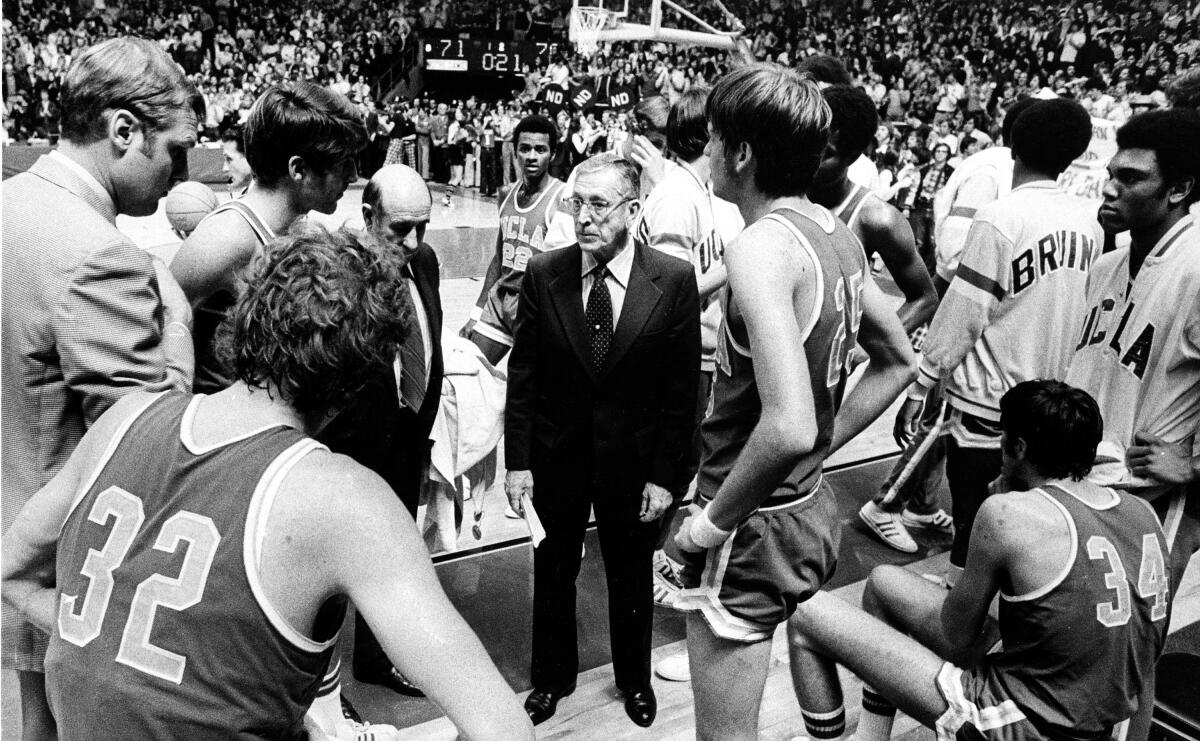
The legacy agreement with ASUCLA came up Tuesday during a UC regents meeting when Stephen Agostini, UCLA’s chief financial officer, discussed the financial challenges facing the school’s athletic department. Agostini said this arrangement was different from what he had experienced in his previous role as associate vice chancellor for budget and finance at the University of North Carolina at Chapel Hill.
“When I arrived on the UCLA campus, I was a little surprised since I was accustomed to having those income streams be available either directly to athletics or collected at the [university level],” said Agostini, who recently began his second year in his current role. “It’s a very unique situation. The inability to access those revenues means we have one less tool in the tool kit to address the spending — not just in athletics but anywhere on campus.”
Agostini said he did not have the lost income figures immediately available, but it’s money that could come in handy for an athletic department that has run up a $219.5-million deficit over the last six fiscal years.
Part of UCLA’s budget crisis is rooted in other legacy arrangements that favor the students over the athletic department. Sandbrook said that Young agreed to make the athletic department a tenant of Pauley Pavilion when it was erected in 1965 since there had been no athletic department money used to fund construction costs.
UCLA, saddled with $102.8 million in athletic debt, wasn’t sure it could keep fielding all sports before the moving from the Pac-12 to the Big Ten.
Under this arrangement, ASUCLA ran concessions while the UCLA teams paid a usage fee to practice and play inside what some might have considered their own building, even though it was constructed as a multi-use facility to also house intramurals, special events, concerts and graduations, among other activities.
“For decades,” Sandbrook said, “this was kind of the makeup call to help ASUCLA.”
Young also decided to give athletics just a sliver of mandatory student registration fees so that students could attend athletic events at no or minimal cost. More recently, Sandbrook pointed out that at other UC campuses, including UC Davis and UC San Diego, students have voted to assess themselves an intercollegiate athletic fee of several hundred dollars per year to support their respective athletic programs; UCLA students have not voted to support a similar arrangement.
When UCLA’s athletic department finances struggled in the early 1990s, Young and athletic director Pete Dalis agreed to cut several Olympic sports — men’s swimming and men’s and women’s gymnastics, before almost immediately reversing course to preserve women’s gymnastics under the threat of a gender-equity lawsuit — rather than move more institutional support funding into athletics.
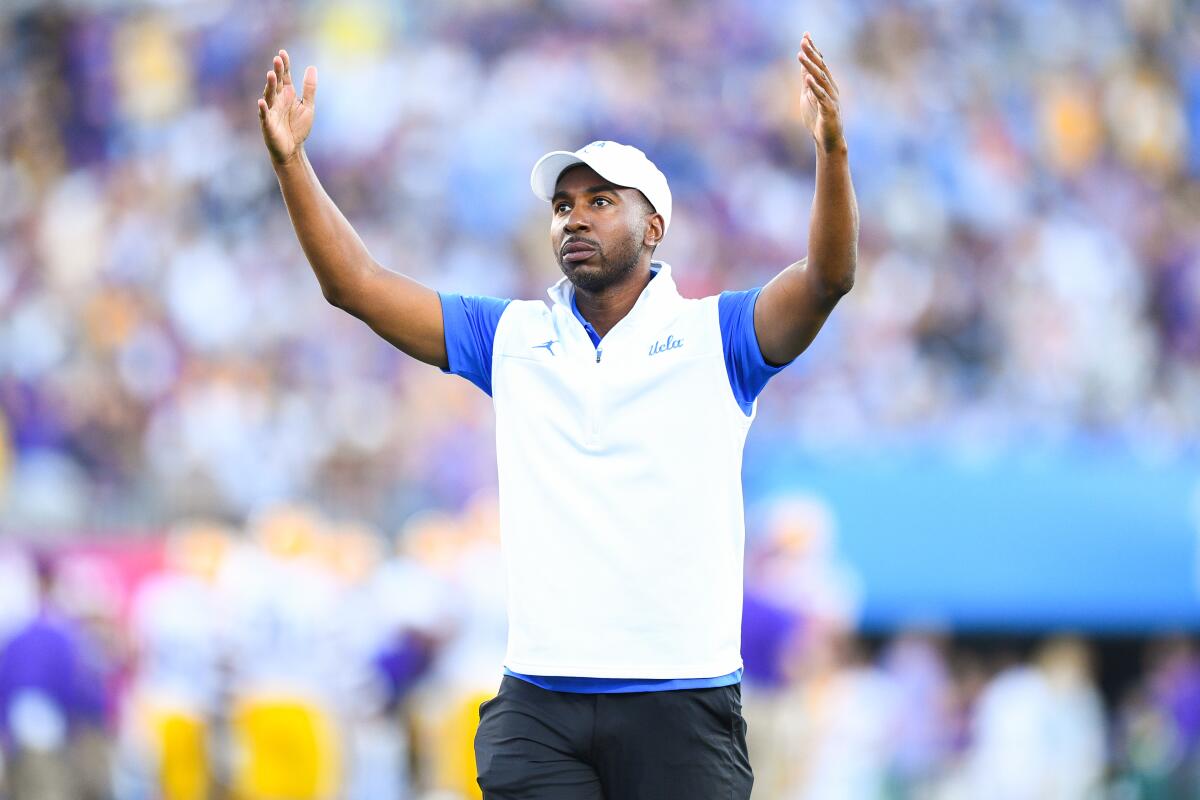
Even as their budget crisis has deepened in recent years, UCLA athletics officials have given no indication that they are considering cuts to sports programs. To help offset the growing deficit, the university gave the athletic department $30 million during the most recent fiscal year. UCLA is also expected to receive $75 million in annual payments from the Big Ten starting with the current fiscal year, a huge windfall compared with what the Bruins made from the Pac-12.
But how sustainable are UCLA athletics under a business model that could actually worsen once revenue sharing with athletes takes hold after the House settlement with the NCAA becomes finalized?
UC regents are done fighting UCLA’s move to the Big Ten after months of contentious review, but the Bruins will owe an annual tax to support Cal.
According to Sandbrook, Young adhered to an informal policy that no UCLA coach would ever make more than the highest-paid faculty member such as a surgeon in the medical school. That notion may seem quaint today given that the UCLA and Cal football and men’s basketball coaches usually top the annual list of highest-paid state employees.
In his final year, Wooden made just $32,500, but by then things were already changing.
Students no longer signed his checks.
More to Read
Go beyond the scoreboard
Get the latest on L.A.'s teams in the daily Sports Report newsletter.
You may occasionally receive promotional content from the Los Angeles Times.


